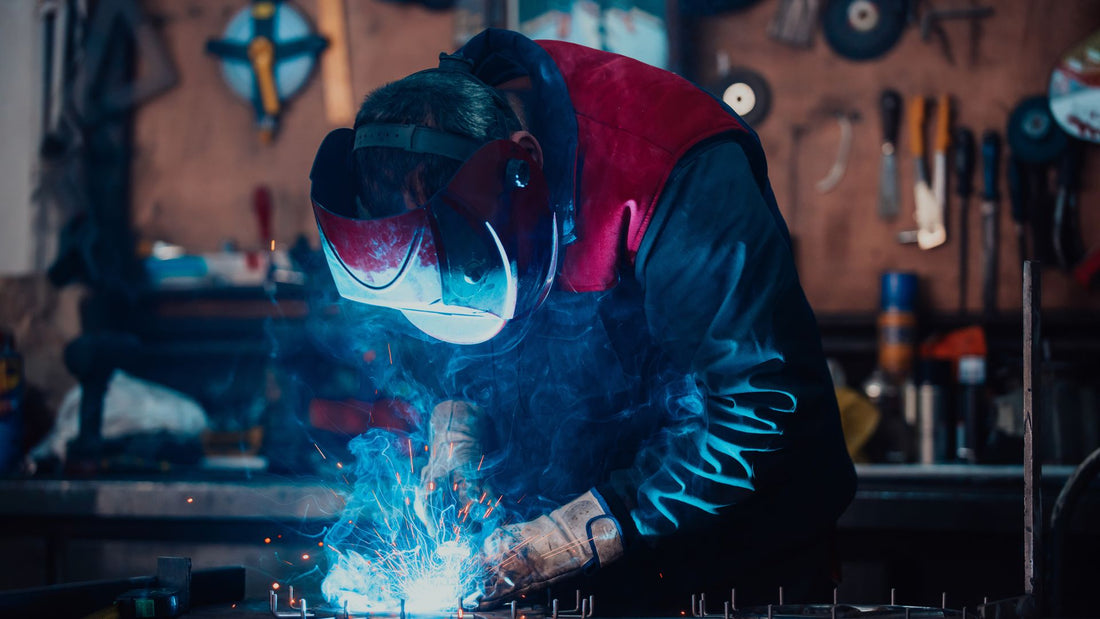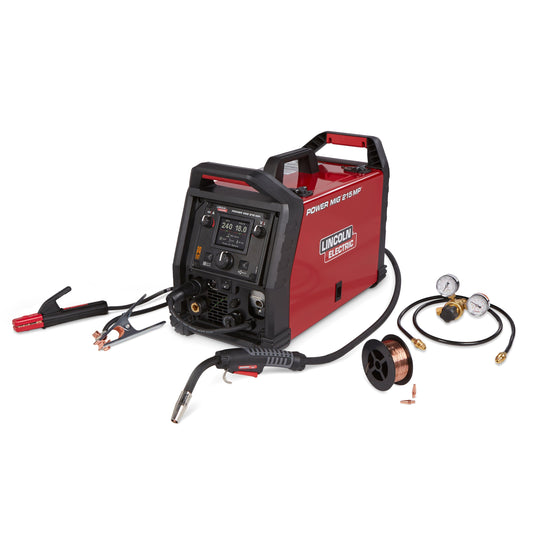Welding at home opens up a world of possibilities for DIY enthusiasts, hobbyists, and those looking to make repairs or build projects from scratch. However, getting started with home welding involves more than just purchasing a welder. You'll need the right equipment, safety gear, and an understanding of the electrical and gas setups required to ensure your workspace is safe and efficient.
This guide will walk you through everything you need to know about welding at home, including recommendations for top products from Baker's Gas and Welding. From choosing the right welder to setting up your workspace and ensuring safety, we've got you covered.
Electrical Setup for Welding at Home
One of the most important considerations when setting up for welding at home is understanding the difference between 120V and 240V electrical plugs and how they impact your welding projects.
- 120V Plugs: These are the standard outlets found in most homes and are designed for lower voltage appliances. Many entry-level welders, such as MIG welders, can run on 120V, making them suitable for lighter tasks like automotive repairs, metal art, or small home projects. However, the lower voltage limits the thickness of the materials you can weld. While convenient, 120V welders may not produce enough heat for heavier-duty projects, particularly when welding thicker metals.
- 240V Plugs: These outlets are typically used for high-power appliances like electric dryers or stoves. Welders that run on 240V can generate significantly more power, allowing for welding thicker materials and handling more demanding projects. However, not all homes are equipped with 240V outlets in the garage or workshop. Installing a 240V outlet often requires a qualified electrician and can be an additional cost, but it's essential for those planning to take on more heavy-duty welding tasks.

Understanding your electrical setup and ensuring that your garage or workshop can handle the power requirements of your chosen welder is crucial. Overloading a breaker or using the wrong plug can lead to tripped circuits, equipment damage, or even electrical fires. Always consult your welder's manual and, if in doubt, seek advice from an experienced welder or electrician to ensure your setup is safe and adequate for your needs.
Choosing the Right Welder
For beginners, ease of use and versatility are key. Here are our top recommendations:
- Miller Multimatic 215: This multiprocess welder handles MIG, Stick, and TIG welding, making it a versatile choice for home welders. It's perfect for various projects, from automotive repairs to custom fabrications.

- Lincoln Power MIG 215: Known for its durability and ease of use, this machine offers MIG, TIG, and Stick capabilities, making it a reliable option for home welding projects. Its dual voltage inputs provide flexibility for different power sources.

The Gas Setup for Home Welding
Not all welding processes require shielding gas, but if you're using a MIG welder with solid core wire, you'll need gas to protect the weld pool from contamination.
- Shielding Gas: For MIG welding, a mixture of Argon and CO2 is commonly used. It's important to consider the size of the gas cylinder. While smaller 20-cf tanks are easier to store, larger cylinders (like 80 or 125-cf) offer better cost savings and reduce the frequency of refills.
- Safety and Storage: When storing gas cylinders, ensure they are upright and secure. They should be kept at a safe distance from welding work and sparks. Additionally, check with your home insurance provider about any restrictions related to storing pressurized gas tanks.
Essential Home Welding Products
Besides the welder and shielding gas, you'll need several other tools and safety gear to ensure your welding projects go smoothly:
Welding Hoods
- Lincoln Viking 3350: Offers a large viewing area and 4C lens technology, providing superior optics and eye protection.

- Miller Digital Infinity: Features the largest viewing area in the industry, with clear light technology for accurate color vision.

Welding Gloves and Protective Clothing
- Welding Gloves: Essential for keeping your hands safe from sparks and burns. Baker's has a wide variety of welding gloves to choose from depending on which welding process you are looking to perform.
- FR Shirts: FR (Fire Resistant) shirts are essential for protecting yourself from sparks coming off of your welding project. FR shirts will ensure that your clothing doesn't catch fire in the event contact with sparks are made.
Additional Welding Necessities
- Welding Table: Having a durable workspace that can withstand high heat will help significantly when completing any welding project. The Strong Hand Tools Welding Table is a great fit for new welders looking to create the perfect home set-up.

- Clamps and Magnets: Holding your weld in place at the correct angle is crucial for a clean finished product. Using clamps and magnets will simplify this process.

- Brushes and Angle Grinders: Making sure your surface is clean and prepped is essential for completing a successful weld. Using tools like wire brushes and grinders will ensure your weld will hold without added debris or contamination.
Safety Considerations for Home Welding
Safety should always be your top priority when welding at home. Here are some tips to help you maintain a safe workspace:
- Fire Safety: Keep at least two fire extinguishers within easy reach and remove any flammable materials from the vicinity. Consider using flame-resistant blankets to create a welding shield, protecting your workspace from sparks and spatter.
- Ventilation: Proper ventilation is crucial, especially in enclosed spaces like a garage. An open window or door with a box fan usually suffices, but more robust fume extractors are also a great option for welders who want to keep the air in their workspace free from harmful fumes.

- Workspace Organization: A clutter-free workspace reduces the risk of accidents. Regularly inspect hoses and cords for leaks or kinks, and keep your tools organized on a cart or in designated areas.
Starting your welding journey at home is exciting, but it requires careful planning and the right equipment to ensure safety and success. From selecting a welder to setting up your workspace and choosing essential safety gear, this guide provides the foundation you need to get started.
At Baker's Gas and Welding, we're here to help you every step of the way. If you have any questions or need a quote, don't hesitate to reach out to us by calling 877-930-5690 or emailing support@bakersgas.com Happy welding!



